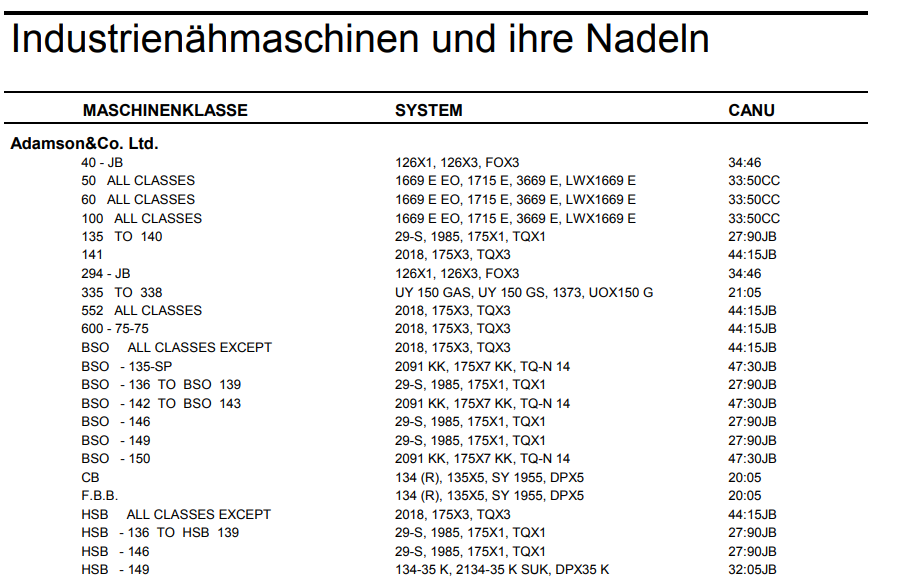
Tigweldor
Members-
Posts
238 -
Joined
-
Last visited
Profile Information
-
Gender
Male
-
Location
Germany
-
Interests
Tree climbing, beer brewing, Shovelheads, old machinery
LW Info
-
Leatherwork Specialty
Own patent on belt buckles
-
How did you find leatherworker.net?
Internet
Recent Profile Visitors
The recent visitors block is disabled and is not being shown to other users.
Tigweldor's Achievements

Member (2/4)
-
Hi, Being a metal worker by trade, I made my table top from a sheet of 12mm (about 1/2 inch ) aluminum plate for my Pfaff 138 For my Singer 29-33 (now replaced by an Adler 30-7 cause it handles bigger bobbins) I made the whole table from angle iron - bolted together to show other people that it can be done without any welding skills - even though I´ve been TIG welding for nigh on 40 years. Greetings Hans
- 181 replies
-
- diy sewing table
- industrial sewing table
-
(and 3 more)
Tagged with:
-
Hi, If you give me your e-mail address via personal message, I will send you a pdf of the original user manual for the Adler 4 and 5 machines. It is in German language - so you should be able to understand the text without an AI translator. Another thing : are you sure that you have the needle positioned the right way ? Industrial needles as used in the Adler 4 and 5 units have to be in such a position, that the thread enters from the left side of the needle when facing your machine and exits to the right side - not like home sewing machines where you are facing the thread hole of the needle when sitting in front of the machine. Latter is just to make sure that your needle is in the correct position - else your thread will break as soon as it tries to tie a knot with the hook. Are you also sure that the needle size used is the correct one analog to the thread used ? - A heavy thread will require a thicker needle in order to ensure proper pass through the fabric/leather. Last but not least - what type of needle are you using - the Adler type 4 and 5 use needle type 328 - get the ones made by Schmetz and avoid copies made in Chinesistan or India - they are mostly junk with inferior dimensions and quality. Also : try to pull on the thread before it is engaged to the eye of the needle - if you can not pull it a centimeter before it breaks, your top thread tension settings are way to stiff/strong. Greetings Hans
-
Roger - I´ll keep that in mind. Now with English not being my mother tongue - I just hate to read written a while later and see my text as if written by an illiterate dork. Greetings Hans
-
Is B69 thread thick enough for use attaching bag handles?
Tigweldor replied to AEBL's topic in Sewing Leather
Naturally that depends upon how much weight you plan to tote around in your bag. You can always strengthen the handle attachment stitching by making a box X stitch. Also it matters on how the rest of the bag is stitched - no use having a monstrous handle if the stitches fail at the bottom of the bag and it falls apart there. Greetings Hans -
should naturally read : you will notice it FROM the grooves perpendicular to feed direction. Is there a time limit on editing - if yes - WHY ?
-
Help with identifying an Old Saddle
Tigweldor replied to Frazier's topic in Saddle Identification, Restoration & Repair
Maybe it way custom made for him in Mexico and he didn´t want to have the maker´s brand on it ? That way just my first thought when seeing the conchos. Greetings Hans -
Bell knife not sharp enough due to burr left on the inside after using the built in sharpening wheel. When the leather is still thick enough, you will not notice it other than the grooves perpendicular to the feed direction - but when it gets real thin, the burr will grab it and make a mess. Also take a very close look at the stone. It has pores that tend to clog up and leather builds up on that - thus changing foot pressure when the lump is directly under the leather. Dry ice blasting is a very good way to "resurface" the stones by cleaning the pores. With the "grabby" again stone, you can then use less foot pressure. Greetings Hans
-
To the brits : Adamson pedal identification
Tigweldor replied to Tigweldor's topic in Leather Machinery
Well, while browsing on this here web site in articles posted long time ago (nigh on 10 years) - I found a 143 page needle chart that Con had uploaded. And guess what - the first company on the list was Adamson - and they do list the BSO models as well, so it the same company. Unfortunately I could not find any models on Ebay.UK other than the Button Sew On machines. -
Found this article in my old bookmarks. Although it is more for industrial application, where a technician has to set up many machines in little time and thus uses a tension gauge - there are some good points mentioned and steps to follow even when not using a gauge. I bought one of those gauges made by Schlafhorst years ago ( zero to 4 Newtons) - but to tell the truth - it has not seen use much at all. The company is no longer in existence, but Towa (Japan) still makes models for same purpose - as does Hans Schmidt - latter makes gauges for all sort of tensions. https://www.hans-schmidt.com/en/produkte/tension-meter/ Thread tension.pdf
-
Found this chart on the internet a while ago - had lost it amongst my bookmarked pages. For leather sewing machines, look under : Arm- und Säulenmaschinen / Sattlernähmaschinen Also good for identifying unknown needles cause it has exact needle measurements - which for old needles are often hard to obtain. https://www.naehmaschine-antik.de/technik-nadeln.html#leather-nm Greetings Hans
-
Talked to a bud today - who has way longer experience servicing old sewing machines than I do. He said that on the old Dürkopp 18 you have to watch this unit : To the immediate left side of the top thread tensioner there is another round thread guide. The top of that thread guide goes up and down, powered by a cam from underneath, and releases just enough thread for proper loop forming before it pinches the thread again. Now if timing of that "thread pincher" is out of sync - it will stop/bind free thread movement within the loop forming process and the arm that wants to wrap the thread around the shuttle bow will lose hold of the thread. So you have to make sure that the plunger works with the up and down motion at proper timing. Also make sure that needle to thread size fits just right - on leather it is better to go on the large side of needle sizing, so thread can form a loop and is not being pinched into the needle groove by to tight of a fit of the hole in the leather - thus not being able to form a loop because the needle pulls the thread up on the up stroke. So if you do not have different size needles at hand - just try thinner top thread for now. If all works out then - you have found the prob and can order bigger size needles for the thicker thread Hope that helps you out Greetings Hans
-
Ditching EFKA Vario DC motor....what do I loose?
Tigweldor replied to alpinelite's topic in Leather Sewing Machines
Yes - read manual page 16 For the position transmitter I need the actual serial numbers - even with my reading glasses on I can not read the little lable. Type = P5-2 or P52 ?? - they have different types. Have to get more intricate info from EFKA - can not do that without complete specs or else I will make myself look silly. I have set up procedure for the old P5 units - but it is in German and very short - I know that they have more detailed info. I would seriously advise you to get help from a friend who is an electronic technician - this is all not stuff for Joe Hobbyist whose main job is a logger (not that I am knocking loggers, used to be a tree topper and a shake block cutter myself when I was young) - but you have to eliminate all potential probs step by step. Greetings Hans -
Here is a pic of the 2 different shuttles - see difference in mentioned hole diameter and number of holes analog to thread size used on the bobbin. These shuttles do not move at all - they stay stationary as the arm wraps the top thread around the bow. They are about as common as hens´teeth to find without having to buy the whole machine.
-
Merrow makes such butt stitch sewing machines - even made in the US of A. https://www.merrow.com/Overlock_Sewing_Machines/Continuous_Processing/70d3b2ls For a permanent locked butt stitch, they build a 2 needle machine. They will even build a model to your exact sewing specs - at no extra cost. If you go to Ebay.UK - you will find them up for auction - just the machine head. Otherwise you could try a fur stitching machine such as a Singer 46, Bonis, Strobel, Rittershausen - they even make one in the UK = an Allbook & Hashfield. Greetings Hans
-
You have to use needles 134 Since your machine ist in sub class B - you have to use needles between size 80 to 100. The S indicates that this machine was delivered with pressure foot for fabric. It was not really meant for sewing thicker leather as to limitation to the small needles. Should you want to sew thick leather - buy a different machine for that purpose.




